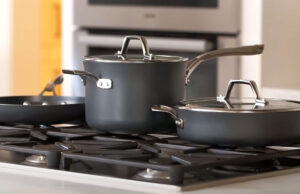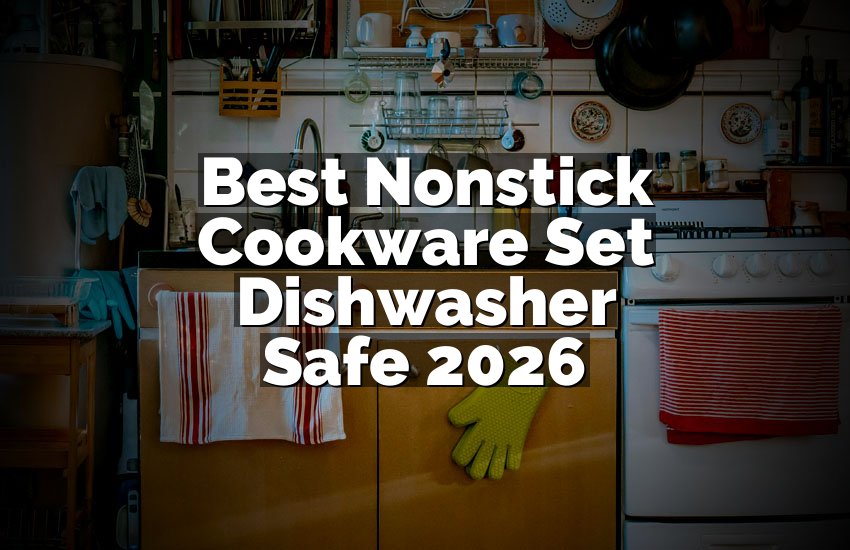As an Amazon Associate, I earn from qualifying purchases at no extra cost to you.
How to Fix Miele Dishwasher Error Code F24 the Easy Way
If your Miele dishwasher suddenly shows the dreaded F24 error, it can feel frustrating and confusing. Many people panic, thinking the appliance is broken beyond repair. But don’t worry! In this article, you will discover simple and practical ways to fix this problem. You’ll learn exactly what causes it and how to solve it without stress. Say goodbye to uncertainty and get your dishwasher running smoothly again.
Ultimate Guide to Solving Miele Dishwasher Error Code F24
Check the Water Supply and Hoses
The F24 error usually appears when the dishwasher detects a problem with the water flow. First, make sure the water supply is turned on fully. Sometimes the valve connected to the dishwasher is partially closed or blocked, which can stop water from entering the machine. Inspect the hoses for any kinks or bends. Even a small twist can prevent proper water flow and trigger the error.
Next, remove the hoses and check them for blockages. Sediment or dirt can accumulate inside and reduce the flow of water. Use a flashlight to look carefully and clean out any visible debris. After cleaning, reconnect the hoses tightly to avoid leaks. Also, ensure the hose filter is not clogged, because this can restrict water entering the dishwasher.
It’s important to check the water pressure as well. Low pressure can sometimes cause the F24 error. You can test it by running water elsewhere in your house to ensure the supply is strong. If you notice weak water flow, contact a plumber or check your home’s main water valve.
Finally, always ensure the dishwasher is properly positioned. If it is tilted or uneven, it can affect water intake. Make adjustments so the machine sits flat and stable. This simple check can save a lot of headaches.
- Turn on the water supply fully
- Inspect hoses for kinks or bends
- Remove and clean hoses for blockages
- Check hose filters for dirt
- Test water pressure in the house
- Ensure dishwasher is level and stable
Inspect and Clean the Filters
Dirty filters are a common cause of the F24 error. Over time, food particles and soap residue can clog the filters. Start by opening the bottom of the dishwasher and removing the filter system. Check both the coarse and fine filters. Rinse them under running water to remove visible debris.
For stubborn residue, use a soft brush to gently scrub the filter. Avoid metal brushes because they can damage the mesh. Make sure every corner is clean, as even a small particle can restrict water flow. After cleaning, place the filters back carefully. Ensure they click into place properly.
Filters should also be checked for damage. Cracks or tears can allow debris to bypass the filter and block other parts of the dishwasher. Replace damaged filters with genuine Miele parts to maintain performance. Regular cleaning of filters can prevent many future problems, including the F24 error.
Also, clean the filter housing and surrounding areas. Residue can build up in corners and reduce the effectiveness of your filters. Wipe it down with a damp cloth and mild soap. This step may seem small but is very effective.
- Remove both coarse and fine filters
- Rinse thoroughly under running water
- Scrub gently with a soft brush
- Check for cracks or damage
- Clean the filter housing area
- Reinstall filters securely
Examine the Water Inlet Valve
The water inlet valve controls water entering the dishwasher. If it is blocked or faulty, the F24 error will appear. First, unplug the dishwasher and turn off the water supply. This ensures safety before handling any electrical parts. Locate the water inlet valve at the back or bottom of the machine.
Check the valve screen for dirt or mineral deposits. Clean it carefully using a soft brush or cloth. If the screen is damaged or the valve itself shows corrosion, it needs to be replaced. Do not attempt to use the dishwasher with a faulty valve because it may lead to more serious damage.
You should also check the electrical connection to the valve. Loose or corroded wires can prevent the valve from functioning correctly. Tighten connections and remove any corrosion with a soft cloth. After everything is checked, reconnect the valve, restore the water supply, and test the dishwasher.
Pay attention to how the dishwasher fills after repairing the valve. If the F24 error returns, further inspection may be needed by a professional. However, in many cases, cleaning or replacing the valve solves the problem completely.
- Turn off dishwasher and water supply
- Locate water inlet valve
- Clean valve screen of dirt and deposits
- Check for corrosion or damage
- Inspect and secure electrical connections
- Test dishwasher after repair
Clear the Drainage System
A blocked drainage system can also trigger the F24 error. First, check the dishwasher’s drain hose for any clogs. Detach it from the sink or floor connection and look inside. Use a long flexible brush to remove debris. Even small obstructions can affect water flow significantly.
Next, inspect the dishwasher drain pump. Remove any trapped food or items that may be caught inside. Turn the pump manually to ensure it rotates freely. If it is stiff or jammed, cleaning may be necessary. Avoid using sharp objects that could damage the pump.
Check the sink drain connection as well. Sometimes, the blockage is outside the dishwasher. Pour water down the drain to see if it flows freely. If it is slow, unclogging the sink will improve dishwasher performance.
Finally, ensure the drain hose is correctly positioned. It should have a high loop or air gap to prevent backflow of water. Improper placement can confuse the dishwasher and trigger the F24 error.
- Check and clean drain hose
- Inspect drain pump for debris
- Turn pump to ensure it rotates freely
- Avoid damaging sharp tools
- Check sink drain for blockages
- Position hose with high loop or air gap
Reset the Dishwasher Electronics
Sometimes, the F24 error is caused by a temporary glitch in the electronics. Resetting the dishwasher can solve the problem quickly. Begin by turning off the dishwasher and unplugging it from the power source. Wait at least five minutes before turning it back on.
Some models have a built-in reset button or combination of buttons. Consult your Miele manual to perform a proper reset. Press the buttons as instructed and hold for the required time. This can clear minor electronic faults and restore normal operation.
Also, observe the dishwasher after resetting. Watch how it fills with water and starts the cycle. If the error disappears, it was likely a temporary electronic glitch. If it returns, further inspection of mechanical parts is necessary.
Resetting is a simple but effective way to fix minor problems without professional help. Doing it carefully can save time and prevent unnecessary repairs.
- Turn off and unplug dishwasher
- Wait at least five minutes
- Use reset button or key combination
- Observe machine during first cycle
- Check if error returns
- Proceed to further repair if needed
Check for Leaks and Obstructions
Leaks or hidden obstructions can also cause the F24 error. Inspect the dishwasher interior for standing water or unusual puddles. Small leaks can affect sensors and trigger error codes. Clean any visible water and locate the source carefully.
Examine the door seal for cracks or damage. A leaking door can prevent proper water circulation. Wipe the seal clean and ensure it is seated correctly. Replace it if it shows wear. Leaks in hoses or connections should be tightened or replaced promptly.
Next, look inside the dishwasher for foreign objects. Small items like bottle caps or utensils can block water flow and sensors. Remove any items that do not belong and clean the bottom of the dishwasher thoroughly.
Finally, run a short test cycle to confirm everything is functioning. Watch for leaks, noises, or errors. Correcting leaks and removing obstructions can prevent recurring F24 errors and improve dishwasher longevity.
- Inspect dishwasher interior for water
- Check door seal for damage
- Tighten or replace leaking hoses
- Remove foreign objects
- Clean bottom of dishwasher
- Run short test cycle
| Issue | Action to Take | Tools Needed | Expected Result |
|---|---|---|---|
| Water supply problem | Check valves, hoses, water pressure | Wrench, flashlight | Normal water flow |
| Dirty filters | Remove, rinse, brush filters | Soft brush, water | Improved water circulation |
| Faulty inlet valve | Clean or replace valve | Screwdriver, cloth | Dishwasher fills properly |
| Drainage block | Clean hoses and pump | Flexible brush | Water drains completely |
| Electronics glitch | Power reset | None | Temporary error cleared |
| Leaks or obstructions | Inspect, seal, remove objects | Cloth, replacement | No more error, safe operation |
Common Causes of F24 Error You Must Know
The F24 error is not random. Understanding its causes can prevent future issues. Most often, it relates to water supply, drainage, or sensor issues. Low water pressure, blocked filters, or kinked hoses can restrict flow. Sensors detect these problems and trigger the error.
Another common cause is the inlet valve. Mineral deposits or electrical faults can stop water from entering the machine. Cleaning or replacing it usually solves the issue. Similarly, drainage problems can cause water to back up, confusing the sensors.
Mechanical problems like pump jams, debris, or foreign objects are also frequent culprits. Checking the dishwasher interior carefully helps avoid repeated errors. Finally, leaks or worn seals can affect sensor readings and trigger the F24 code.
By knowing these causes, you can inspect your dishwasher systematically. Following the steps in this guide reduces guesswork and speeds up repair. Regular maintenance also helps prevent the error from returning.
How to Maintain Your Dishwasher to Avoid F24
Maintenance is key to avoiding the F24 error. Clean the filters regularly, at least once a month, to prevent clogs. Inspect hoses and connections for leaks or damage. Keep the dishwasher interior clean by wiping down corners and removing food debris.
Use a dishwasher-safe cleaner periodically. This helps remove mineral deposits and soap residue. Avoid overloading the dishwasher, as it can block water flow and sensors. Make sure the water supply and drainage are always clear.
Check the door seal and replace it if worn. Regular inspections prevent leaks that can cause error codes. Also, run a test cycle occasionally after maintenance to confirm everything works properly. These simple habits extend the life of your dishwasher and reduce the risk of errors.
When to Call a Professional
Sometimes, the F24 error is caused by deeper mechanical or electronic issues. If cleaning, resetting, and checking hoses do not fix the problem, professional help is needed. A certified Miele technician can diagnose issues that are not visible or easily accessible.
Professional inspection is especially important for water inlet valves, sensors, or electronic boards. Attempting DIY repairs in these areas can void warranties or worsen the problem. A technician also has the correct replacement parts and tools.
Calling a professional ensures safety and long-term performance. It may cost a bit more, but it prevents repeated errors and costly damage. Knowing when to call an expert is part of responsible dishwasher ownership.
Upgrading or Replacing Parts
If your dishwasher is older, some parts may fail repeatedly. Consider upgrading to newer Miele-approved components. Replacement parts like valves, pumps, or filters are designed to fit precisely and work efficiently.
When replacing parts, always follow the manufacturer’s instructions. Genuine parts ensure reliability and safety. Avoid cheap alternatives, as they may cause more frequent errors, including F24.
Upgrading parts not only fixes current issues but also improves overall dishwasher performance. It reduces the likelihood of future errors and keeps your appliance running smoothly for years.
Frequently Asked Questions (FAQs)
Is it safe to use the dishwasher with F24 error?
Using the dishwasher with an F24 error is not safe. The error indicates a water supply or drainage problem. Continuing to run the machine may cause flooding, leaks, or damage to internal components. Sensors trigger this code to prevent bigger problems. You should stop using the dishwasher immediately and inspect the cause. Cleaning hoses, filters, or checking the inlet valve often resolves the issue safely.
Can low water pressure trigger F24?
Yes, low water pressure can cause the F24 error. The dishwasher relies on a consistent water supply to fill and operate correctly. If water pressure is weak, the machine cannot function properly, triggering the error. Checking household water pressure and ensuring the supply valve is fully open can solve this problem. In some cases, a plumber may need to adjust your home’s water system.
Do I need special tools to fix F24?
Fixing F24 usually requires basic tools like a wrench, screwdriver, flashlight, and soft brush. Most of the work involves cleaning filters, hoses, and inspecting valves. Specialized tools may be needed only for replacing certain parts. Always follow safety instructions and turn off the dishwasher and water supply before attempting repairs. This prevents accidents and protects the appliance.
Is it necessary to clean filters regularly?
Yes, regular filter cleaning prevents the F24 error. Filters trap food debris and residue that can block water flow. Cleaning every few weeks ensures proper circulation and avoids sensor problems. Simple rinsing under running water and brushing off residue is enough. Neglecting this maintenance often leads to repeated errors and poor dishwasher performance.
Can a blocked drain hose cause F24?
Absolutely. A blocked drain hose can prevent water from leaving the dishwasher. Sensors detect this problem and display the F24 error. Inspecting the hose, removing clogs, and checking the pump ensures proper drainage. Correct positioning of the hose also prevents backflow and repeated error codes.
Do I need professional help for inlet valve issues?
Yes, professional help is recommended for inlet valve problems. Valves control water intake and involve electrical connections. Incorrect handling can cause damage or void warranties. Certified Miele technicians have the tools and experience to replace or repair valves safely and efficiently, ensuring your dishwasher works reliably.
Can leaks inside dishwasher trigger F24?
Yes, leaks can confuse sensors and trigger F24. Even small puddles affect water level detection. Checking door seals, hoses, and connections prevents leaks. Repairing or replacing damaged parts ensures proper water circulation and avoids repeated error codes.
Is it possible to prevent F24 error completely?
While not all errors can be prevented, proper maintenance greatly reduces F24 occurrences. Regularly clean filters, check hoses, inspect valves, and run test cycles. Avoid overloading the dishwasher and use proper detergents. Preventive care keeps the machine running smoothly and extends its life.
Final Thoughts
The Miele dishwasher F24 error can be frustrating, but it is usually easy to fix. By checking water supply, cleaning filters, inspecting valves, and maintaining your appliance, most problems are solved quickly. Regular care prevents future errors and keeps your dishwasher reliable. Following this guide helps anyone handle F24 confidently and enjoy a smooth, stress-free kitchen experience.




